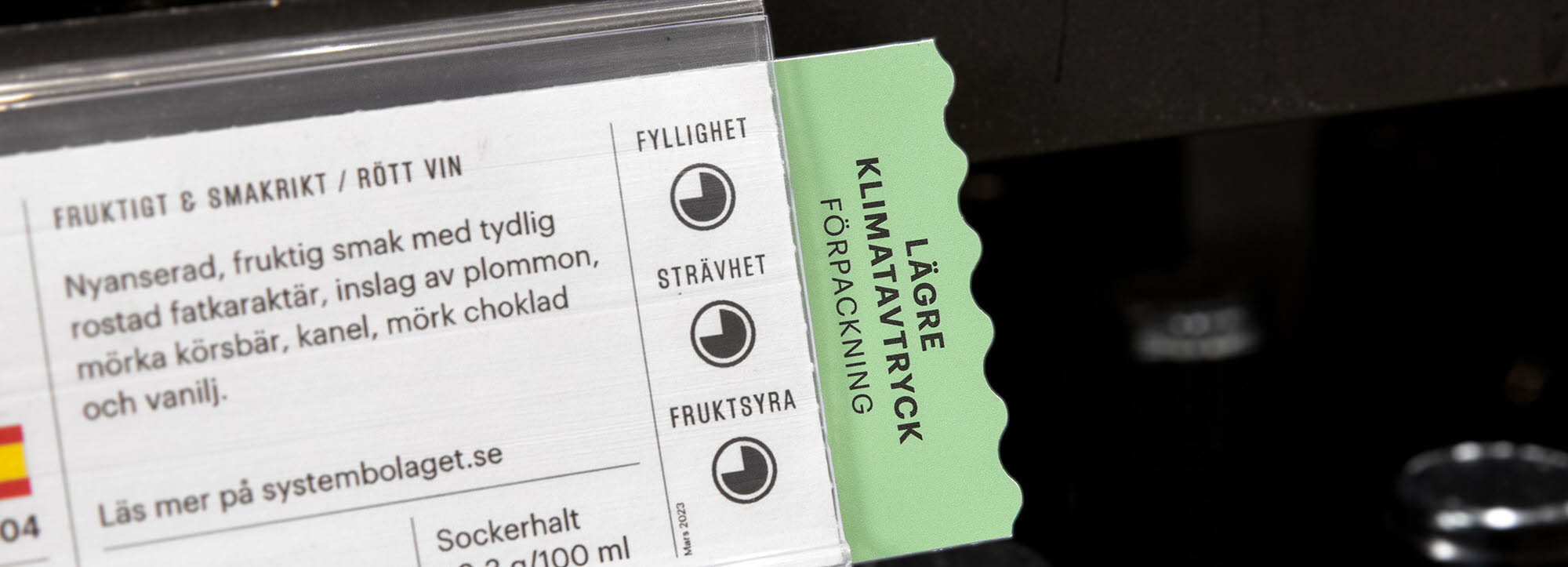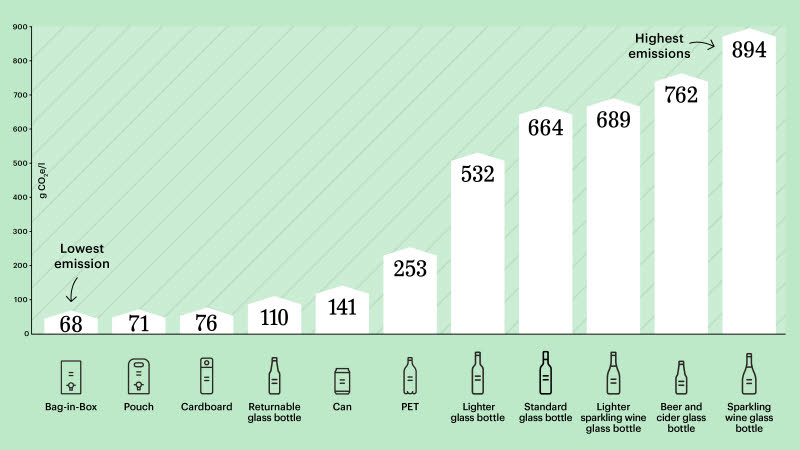
Why have a guidance for packaging?
Beverage packaging accounts for a third of Systembolaget’s total climate impact. More than for transportation, cultivation and production.
Traditional glass bottles have the greatest climate impact. This is because a lot of energy is consumed in their production, even when using recycled glass. Bottles are also relatively heavy, which means loads are heavier when shipped.
This is why we guide our customers towards packaging with the lowest climate footprint.
What types of packaging carries the guidance?
The following types of packaging carry the Packaging with Lower Climate Foortprint guidance:
- Cardboard packaging
- Returnable glass bottles (i.e. glass bottles with a deposit)
- Cans
- PET plastic bottles
- Pouches
The guidance is used where it helps customers make a choice. Therefore, beer cans aren’t labelled while wine cans are. Wine boxes aren’t labelled, even though it is a type of packaging with a lower footprint than traditional glass bottles.
Climate impact of different types of packaging
The following picture shows the climate footprint of various types of packaging (expressed as grams of CO2 emitted) during the manufacturing process. The figures state average emissions for each type of packaging.

The calculations are based on material consumption for the packaging size of each respective type of packaging with the largest sales in 2021:
- Bag-in-box: 3 litre
- Pouch: 2 litre
- Cardboard: 1 litre
- Deposit glass bottle: 0.5 litre
- Can: 0.5 litre
- PET: 0.7 litre
- Lighter glass bottle: 0.75 litre
- Standard glass bottle: 0.75 litre
- Lighter sparkling wine glass bottle: 0.75 litre
- Beer and cider glass bottle: 0.33 litre
- Standard sparkling wine glass bottle: 0.75 litre
The weight of glass bottles varies widely. The weight used in the calculation for each respective bottle type and size is the weighted median of sales volume in 2021.
For comparison, all data are converted to carbon dioxide emissions per litre.
The calculations of carbon dioxide emissions from packaging were made in 2018 and 2019 on behalf of Alko (the Finnish alcoholic beverage retailing monopoly) in collaboration with Systembolaget and Vinmonopolet (the Norwegian wine monopoly). Climate footprint was calculated for the production and seal of the respective packaging.
You can find the final reports here:
Screening carbon footprint for aluminium wine packaging - Final report (pdf)
Update of winepackaging LCA – Final report Alko Oy (pdf)
To find packaging with Lower Climate Footprint in our stores
Look for the green Packaging with Lower Climate Foortprint guidance. You will see it on the side of the shelf. Or ask one of our staff and they will be happy to help.
To find packaging with Lower Climate Footprint on systembolaget.se and in our app
Use the filter for Packaging with Lower Climate Foortprint.